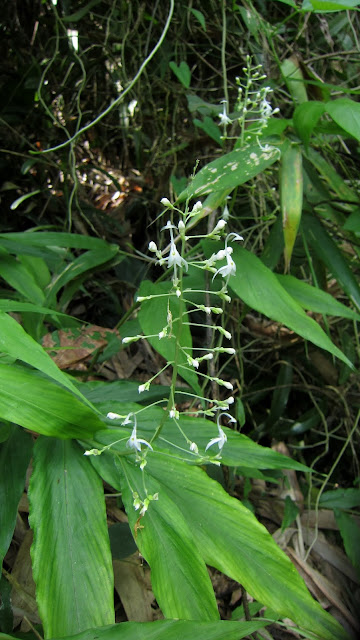The graceful Globba campsophylla
Ginger collectors would surely be familiar with Globba winitii and the yellow-flowered ones like G. marantina and G. schomburgkii. The former have mauve to white bracts, but all three bear golden yellow flowers; indeed, many species from this genus have yellow flowers. Globba campsophylla, a widespread Philippine endemic, breaks the norm by being one of the few white-flowered ones. And during a solo trek, I had the opportunity to observe this species in flower.
Like many globbas, G. campsophylla are low-growing plants usually only around 70 cm tall. They are mainly lithophytic and shade-lovers, often near bodies of water. In some instances, colonies can be found in water seepages, although there are those that are found on rocks that get very dry during the warmer months; in these situations, the plants undergo a slight dormancy where the emaciated pseudostems droop but are not shed off. The plants usually bloom at the onset of the wet season.
Compared to many Globba species, the inflorescences of these plants are held erect. In many species, the flowers are weighty enough to cause the pseudostems to arch. In the case of G. campsophylla, the stems are naturally arching, but since the flowers are smaller and there are no large bracts to contribute to the weight of the display, the rachis can develop tall and proud.
Globba campsophylla is virtually unheard of in cultivation, and throughout the years I have known only one person who keeps it- which is one way of saying that I don't keep it either. These are common gingers in places where they occur, and I frequently see them while taking treks especially in low altitude forests. Keeping them, therefore, would be quite redundant on my part. Still, these would make a fine and delicate display in a large conservatory or botanical garden. Looking at the photo below, I am quite certain that you will agree.









Comments
Post a Comment